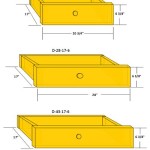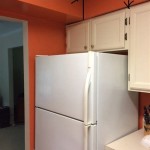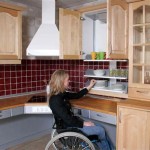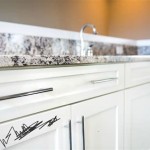Damp Smell In Kitchen Cupboards: Essential Aspects
A damp smell in kitchen cupboards can be a common issue that can be frustrating to deal with. Not only is it unpleasant, but it can also indicate a potential problem with moisture or mold growth. To effectively address this issue, it's crucial to understand the underlying causes and implement appropriate solutions.
One of the primary causes of dampness in kitchen cupboards is poor ventilation. When there is insufficient airflow, moisture can accumulate within the cupboard, creating an environment conducive to mold growth. To improve ventilation, consider installing an exhaust fan in the kitchen or ensuring that existing fans are functioning correctly. Additionally, avoid overpacking cupboards, as this can restrict airflow.
Condensation is another common culprit of dampness in kitchen cupboards. When warm, moist air comes into contact with a cold surface, condensation occurs. This is particularly prevalent in kitchens where cooking activities can generate a lot of steam. To minimize condensation, use a range hood or extractor fan when cooking and try to ventilate the kitchen by opening windows or using a dehumidifier.
Water leaks can also be a significant source of moisture in kitchen cupboards. Inspect pipes and appliances for any signs of leaks, and address them promptly to prevent further water damage. Additionally, check for any gaps or cracks in the cupboard walls or flooring, as these can allow moisture to seep in.
In some cases, the damp smell may be caused by trapped odors from food or spills. To eliminate these odors, thoroughly clean the cupboards with a mixture of water and vinegar or a specialized cleaning solution. Baking soda can also be used as an effective odor absorber; place an open box of baking soda in the cupboard for a few days to absorb any lingering smells.
If the damp smell persists despite implementing the above measures, it may indicate a more serious problem with mold growth. Mold thrives in damp environments and can pose health risks if left untreated. To address mold growth, thoroughly clean the affected area with a bleach solution and allow it to dry completely. If the mold growth is extensive or covers a large area, it may be necessary to remove and discard the affected cupboard components.
To prevent future damp smell issues in kitchen cupboards, it's essential to maintain good ventilation, avoid overpacking cupboards, and promptly address any leaks or spills. Additionally, consider using moisture-resistant materials for cupboard construction and placing moisture-absorbing materials, such as silica gel packs, inside cupboards to help regulate moisture levels.

Musty Smell In Kitchen Cabinets Cupboards Causes Solutions

Getting Rid Of The Musty Old Smell From Your Cabinets N Hance Wood Refinishing Franklin Murfreesboro

Musty Smell In Kitchen Cabinets Cupboards Causes Solutions

Damp Smell In The Kitchen Cupboard Ehow

Help With Odor In Kitchen Cabinets Hometalk

How To Get Rid Of A Mildew Smell Under Sink Dishwasher Hunker House Cleaning Tips Mold

How To Remove Mold In Kitchen 100 Doable The Insider

How To Clean A Moldy Smell Under Kitchen Sink Ehow

How To Get Rid Of A Musty Smell In Cupboards Hunker

7 Easy Tips For Getting Rid Of Musty Smells
Related Posts








